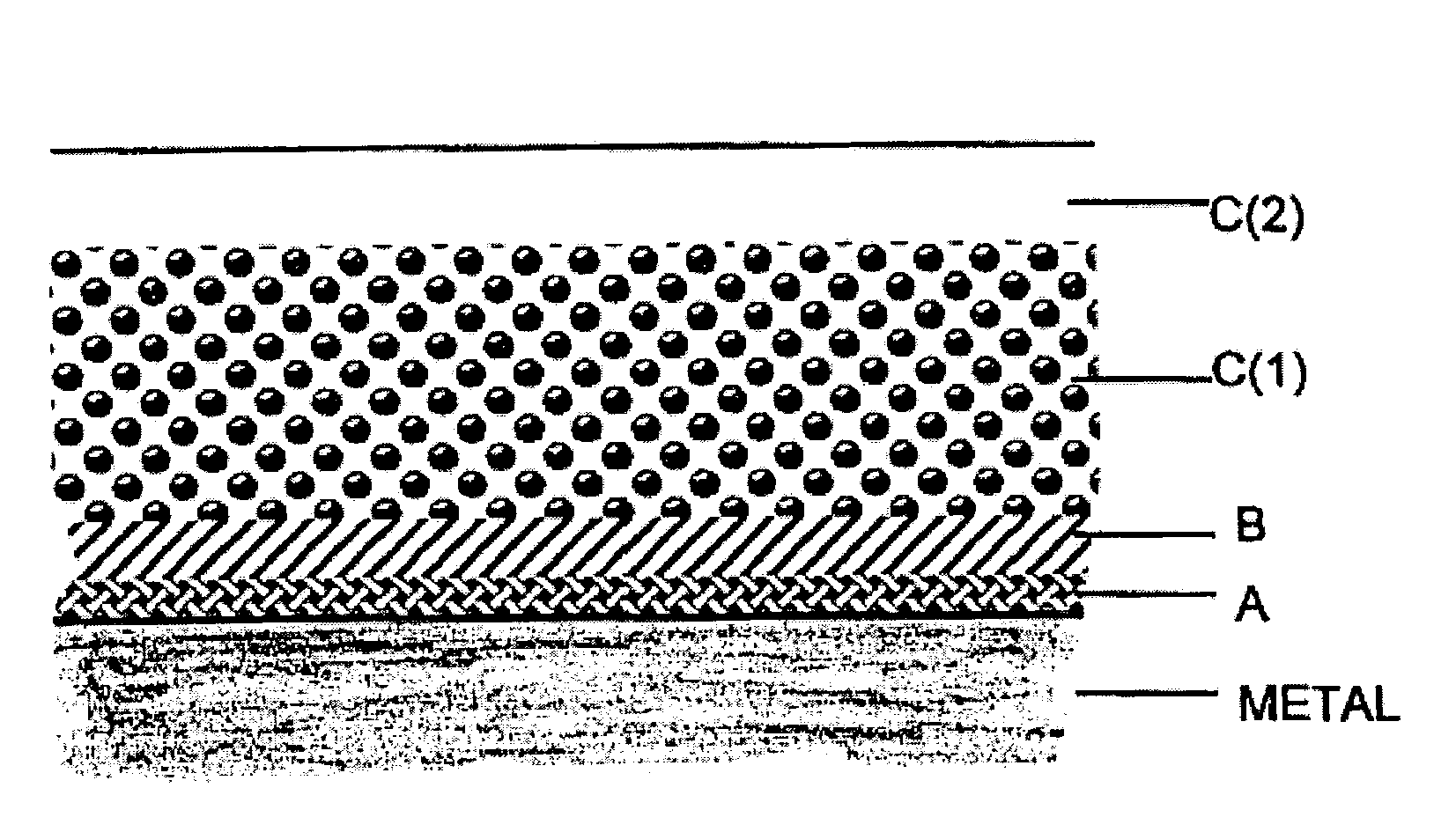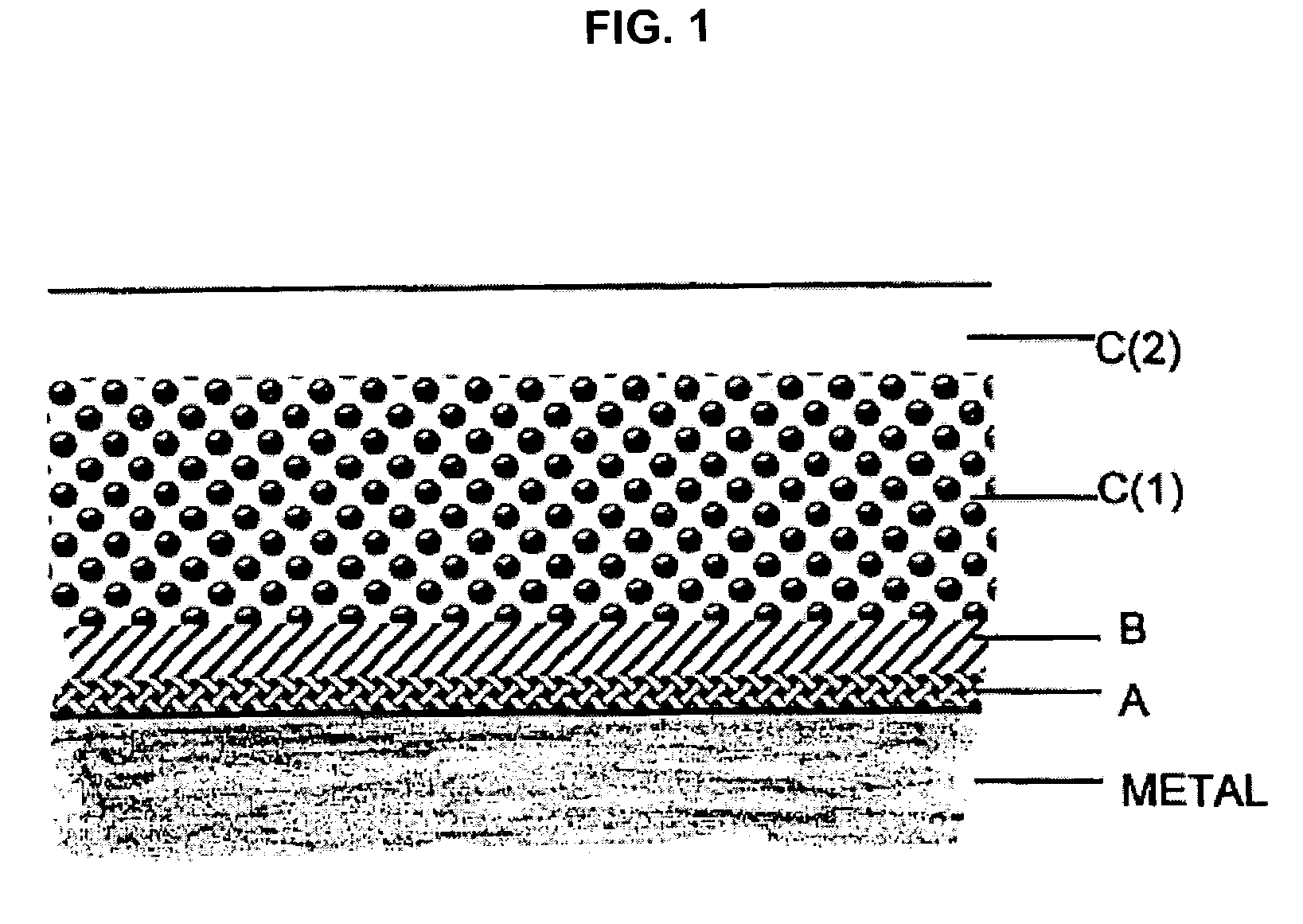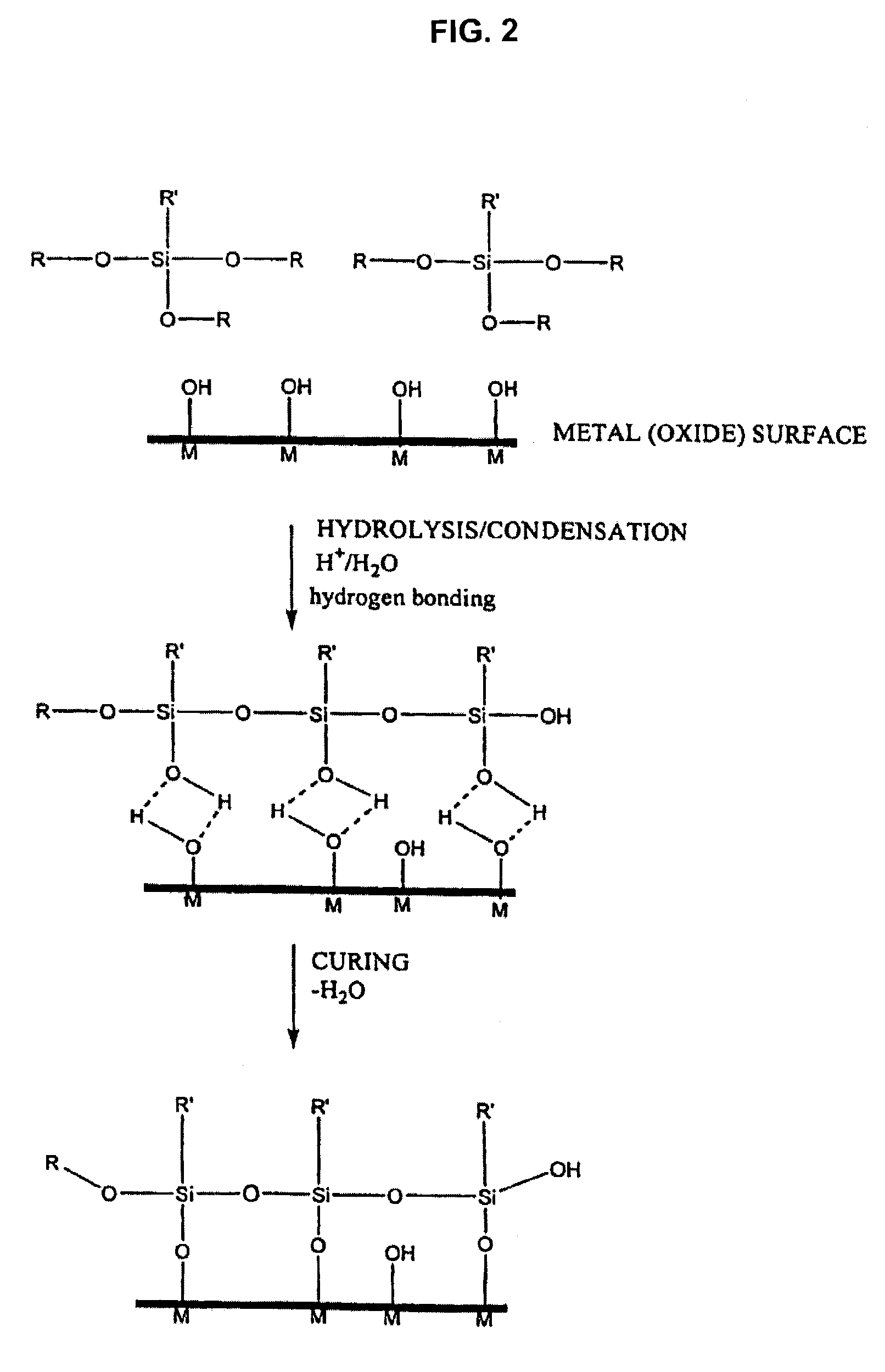Polymer coating for medical devices
a technology of metal surfaces and polymers, applied in the direction of synthetic resin layered products, pharmaceutical packaging, prosthesis, etc., can solve the problems of fibrous encapsulation, increased risk of infection, and multiple complications of metal or polymer devices in the body
- Summary
- Abstract
- Description
- Claims
- Application Information
AI Technical Summary
Benefits of technology
Problems solved by technology
Method used
Image
Examples
example 1
Grafting of Polylactone to Activated Metal Surfaces
[0278]1.1. Activation of the metal surface and polymer grafting. Twenty numbered steel plates (316 stainless steel (SS)), 7×7 mm each, were successively washed with hexane, toluene and methanol, treated by a mixture of sulfuric acid and hydrogen peroxide (1:1) for 1 hour at ambient temperature, thoroughly washed by water and dried. The surface of the plates was activated by immersing the plates in a solution consisting of 0.2 ml of (3-aminopropyl)triethoxysilane (“APTES”) (available, for example, from Aldrich, Milwaukee, Wis., USA) and 20 ml of acetone and heating under reflux for four hours. Next, the plates were repeatedly washed with acetone under nitrogen and dried in a vacuum at 60° C. The activated plates were transferred into a glass reactor containing crystalline L-lactide (72 mg, 0.5 mmol) (available, for example, from Aldrich, Milwaukee, Wis., USA). The reactor content was flushed with dry nitrogen in repeated nitrogen / vac...
example 2
Surface Activation with APTES in Vapor Phase
[0296]SS plates, similar to those in Example 1.1, were rinsed with toluene, methanol and distilled water, blown dry with stream of nitrogen and placed in a vacuum chamber of a radio frequency glow discharge (RFGD) plasma generator (Model 220RGD-200, REFLEX Analytical Corp. Ridgewood, N.J.). Plates were treated with argon plasma for 3 to 5 min (80 to 100 W, 1 to 10 mbar). Surfaces prepared with this procedure showed no organic contamination by ESCA analysis. The freshly plasma-cleaned plates were placed in a glass container, where they were fixed in a PTFE holder which kept their flat surfaces facing the liquid at the bottom of the container. The container was flushed with nitrogen saturated with water vapors and 0.5 ml of APTES was dropped at the bottom under the nitrogen shield. The plates were exposed to APTES vapors for intervals of from 10 minutes to 16 hours. After exposure to silane vapors the plates were removed from the container, ...
example 3
Bis-N-(2-hydroxyethyl)aminopropyl triethoxysilane as a Silane Activating Reagent
[0299]Bis-N-(2-hydroxyethyl)aminopropyl triethoxysilane was used instead of APTES as a silane activating reagent (SAR) in a manner described in Example 1.1. By carrying out the grafting polymerization according to Example 1, metal surfaces containing an average amount of 2.6±0.8 ug / cm2 of covalently bound polylactide were obtained. The plates were further used for deposition of the container polymer layer as it was described in Example 1.4.
PUM
| Property | Measurement | Unit |
|---|---|---|
| Fraction | aaaaa | aaaaa |
| Percent by mass | aaaaa | aaaaa |
| Percent by mass | aaaaa | aaaaa |
Abstract
Description
Claims
Application Information
 Login to View More
Login to View More - R&D
- Intellectual Property
- Life Sciences
- Materials
- Tech Scout
- Unparalleled Data Quality
- Higher Quality Content
- 60% Fewer Hallucinations
Browse by: Latest US Patents, China's latest patents, Technical Efficacy Thesaurus, Application Domain, Technology Topic, Popular Technical Reports.
© 2025 PatSnap. All rights reserved.Legal|Privacy policy|Modern Slavery Act Transparency Statement|Sitemap|About US| Contact US: help@patsnap.com



